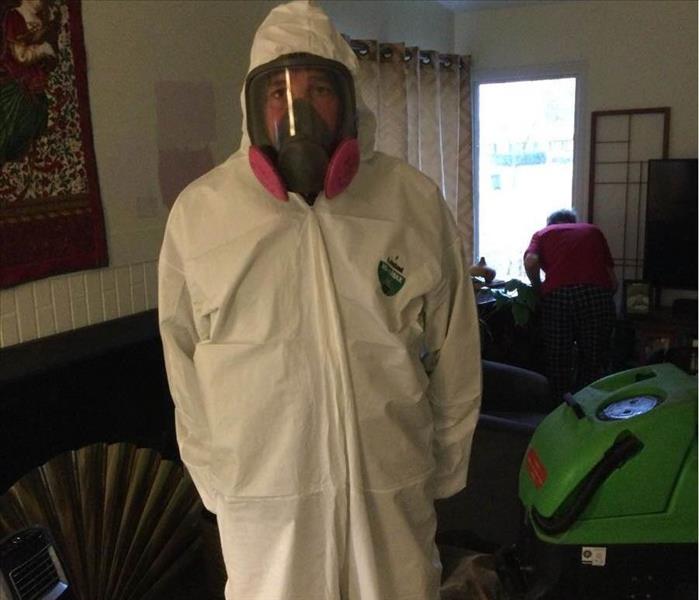4 Ways To Remove Mold From Your Shower
9/27/2021 (Permalink)
When you go to shower, you could potentially be surprised by the sight of black mold growing in your St. Charles home. A bathroom is a warm and moist environment that mold desires, but the mold doesn’t have to permanently reside there. With these four different methods, you can remove shower mold and stop it from becoming more of a hassle.
1. Soap and Baking Soda
Before getting more potent chemicals involved, the mold should be tackled with a solution of dish soap, baking soda, and hot water. This solution should be scrubbed and washed off in moldy areas to remove the surface infestation without risk of discoloration or damage to what’s underneath.
2. Bleach
As its popularity and usage imply, bleach is a good first line of offense against shower mold. Bleach should be diluted in a 1:2 solution with water and applied in multiple cycles of scrubbing and rinsing. Bleach is very effective at removing mold from glass, bathroom counters, and tiles.
3. Hydrogen Peroxide Solution
Unlike bleach, hydrogen peroxide can remove mold from porous surfaces such as wood. As an affordable household item, hydrogen peroxide is often easily obtainable in its recommended 3% solution form.
Hydrogen peroxide should first be sprayed on a small spot to ensure it won’t damage the surface. Once you have confirmed that damage will not occur, the entire moldy area should be coated and left to stand for at least half an hour before wiping it off. It may be worth multiple treatments following the same procedure to remove residual mold.
4. Professional Assistance
These home remedies treat the surface, but mold spreads and hides in places you may not know. A professional residential mold specialty crew can locate hidden mold with special tools and remove extraneous moisture that keeps it alive.
Stopping shower mold prevents it from turning from a localized problem into a household one. With the right method of treatment, you can keep your home clean and mold-free.





 24/7 Emergency Service
24/7 Emergency Service
